Full text
PDF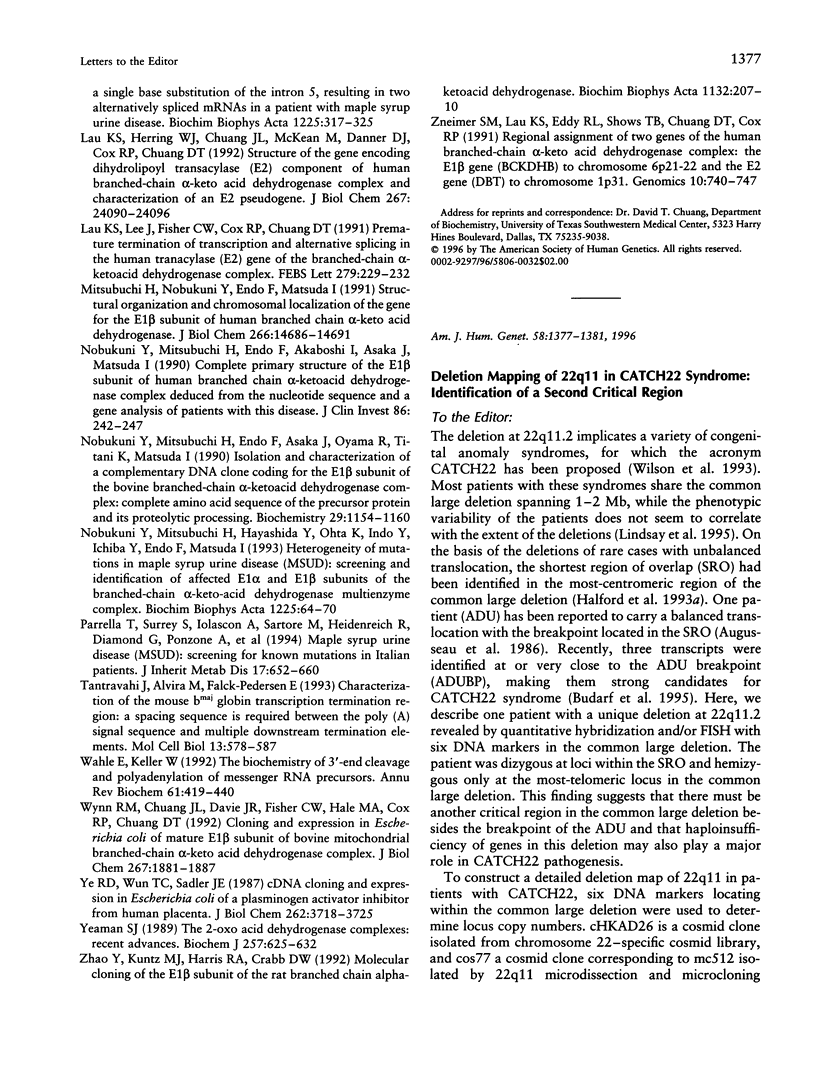
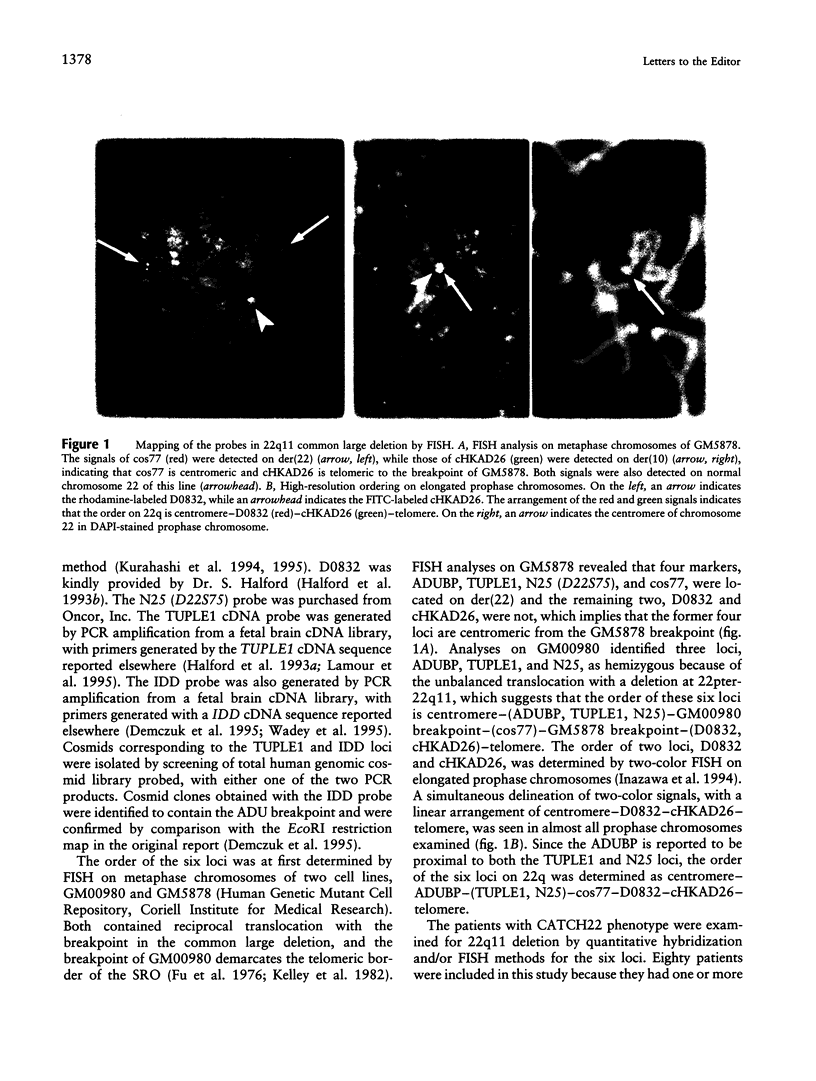
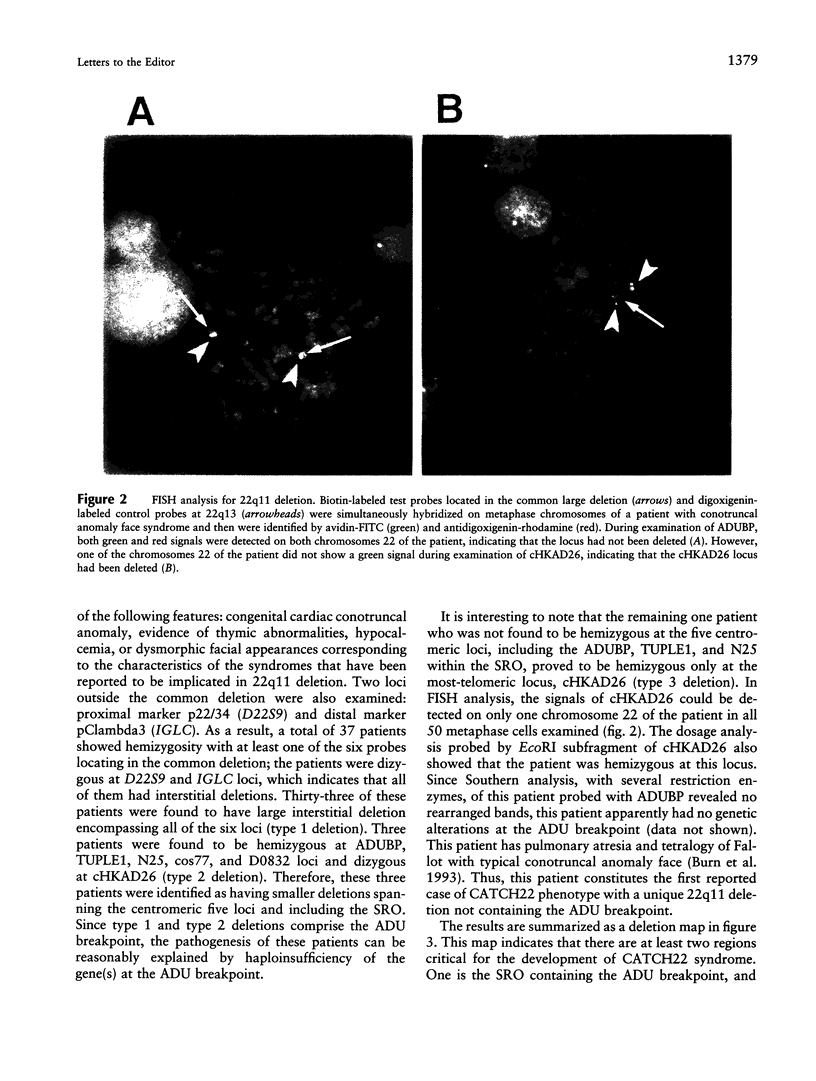
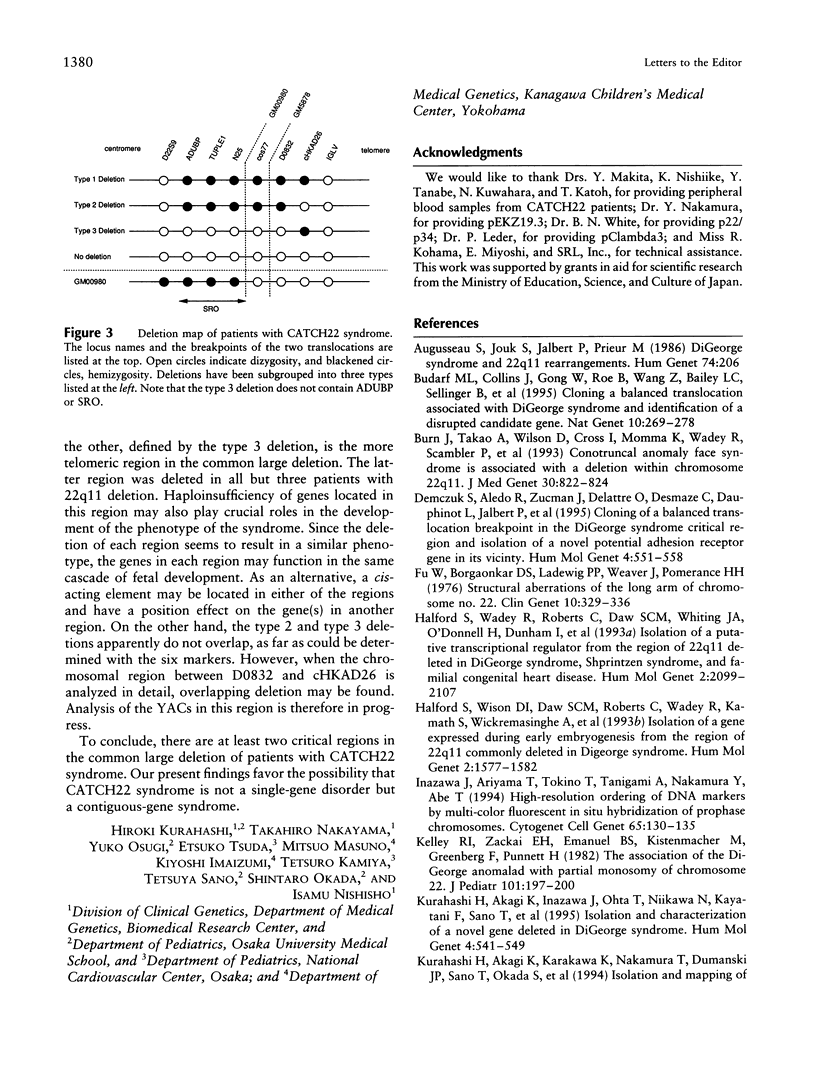
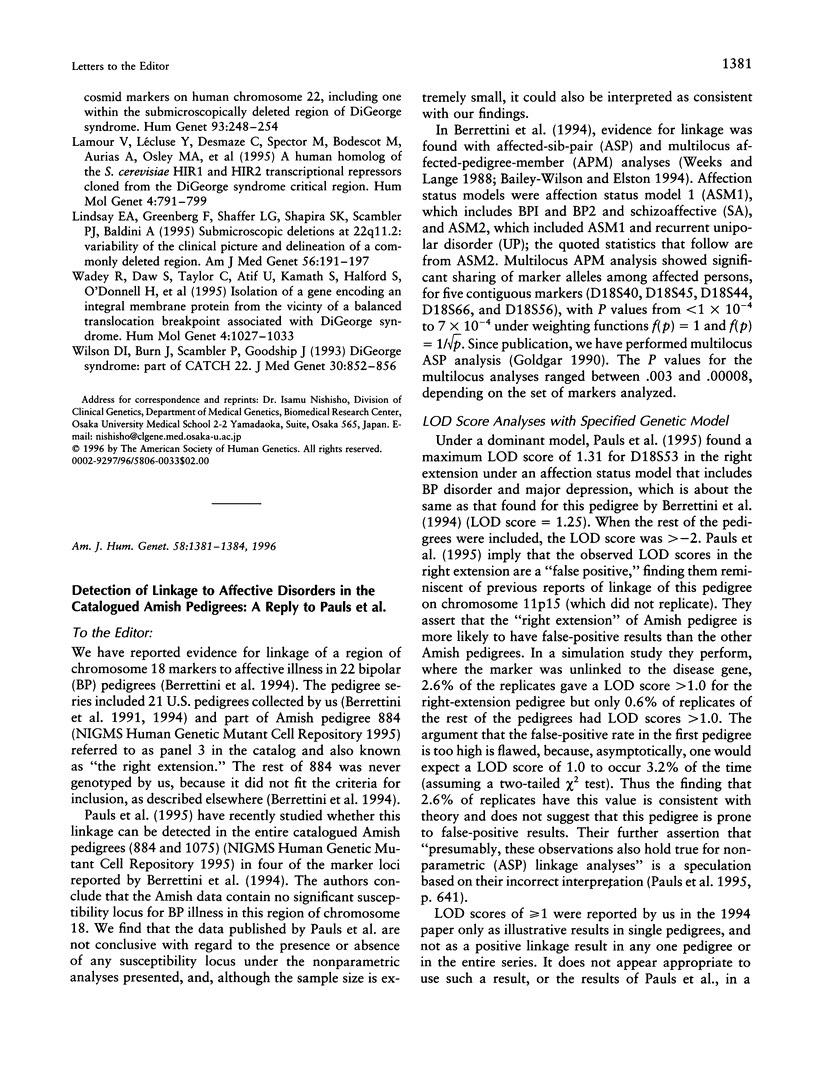
Images in this article
Selected References
These references are in PubMed. This may not be the complete list of references from this article.
- Augusseau S., Jouk S., Jalbert P., Prieur M. DiGeorge syndrome and 22q11 rearrangements. Hum Genet. 1986 Oct;74(2):206–206. doi: 10.1007/BF00282098. [DOI] [PubMed] [Google Scholar]
- Budarf M. L., Collins J., Gong W., Roe B., Wang Z., Bailey L. C., Sellinger B., Michaud D., Driscoll D. A., Emanuel B. S. Cloning a balanced translocation associated with DiGeorge syndrome and identification of a disrupted candidate gene. Nat Genet. 1995 Jul;10(3):269–278. doi: 10.1038/ng0795-269. [DOI] [PubMed] [Google Scholar]
- Burn J., Takao A., Wilson D., Cross I., Momma K., Wadey R., Scambler P., Goodship J. Conotruncal anomaly face syndrome is associated with a deletion within chromosome 22q11. J Med Genet. 1993 Oct;30(10):822–824. doi: 10.1136/jmg.30.10.822. [DOI] [PMC free article] [PubMed] [Google Scholar]
- Demczuk S., Aledo R., Zucman J., Delattre O., Desmaze C., Dauphinot L., Jalbert P., Rouleau G. A., Thomas G., Aurias A. Cloning of a balanced translocation breakpoint in the DiGeorge syndrome critical region and isolation of a novel potential adhesion receptor gene in its vicinity. Hum Mol Genet. 1995 Apr;4(4):551–558. doi: 10.1093/hmg/4.4.551. [DOI] [PubMed] [Google Scholar]
- Fu W., Borgaonkar D. S., Ladewig P. P., Weaver J., Pomerance H. H. Structural aberrations of the long arm of chromosome no. 22. Report fo a family with translocation t(11;22) (q25;q11). Clin Genet. 1976 Dec;10(6):329–336. doi: 10.1111/j.1399-0004.1976.tb00057.x. [DOI] [PubMed] [Google Scholar]
- Halford S., Wadey R., Roberts C., Daw S. C., Whiting J. A., O'Donnell H., Dunham I., Bentley D., Lindsay E., Baldini A. Isolation of a putative transcriptional regulator from the region of 22q11 deleted in DiGeorge syndrome, Shprintzen syndrome and familial congenital heart disease. Hum Mol Genet. 1993 Dec;2(12):2099–2107. doi: 10.1093/hmg/2.12.2099. [DOI] [PubMed] [Google Scholar]
- Halford S., Wilson D. I., Daw S. C., Roberts C., Wadey R., Kamath S., Wickremasinghe A., Burn J., Goodship J., Mattei M. G. Isolation of a gene expressed during early embryogenesis from the region of 22q11 commonly deleted in DiGeorge syndrome. Hum Mol Genet. 1993 Oct;2(10):1577–1582. doi: 10.1093/hmg/2.10.1577. [DOI] [PubMed] [Google Scholar]
- Inazawa J., Ariyama T., Tokino T., Tanigami A., Nakamura Y., Abe T. High resolution ordering of DNA markers by multi-color fluorescent in situ hybridization of prophase chromosomes. Cytogenet Cell Genet. 1994;65(1-2):130–135. doi: 10.1159/000133618. [DOI] [PubMed] [Google Scholar]
- Kelley R. I., Zackai E. H., Emanuel B. S., Kistenmacher M., Greenberg F., Punnett H. H. The association of the DiGeorge anomalad with partial monosomy of chromosome 22. J Pediatr. 1982 Aug;101(2):197–200. doi: 10.1016/s0022-3476(82)80116-9. [DOI] [PubMed] [Google Scholar]
- Kurahashi H., Akagi K., Inazawa J., Ohta T., Niikawa N., Kayatani F., Sano T., Okada S., Nishisho I. Isolation and characterization of a novel gene deleted in DiGeorge syndrome. Hum Mol Genet. 1995 Apr;4(4):541–549. doi: 10.1093/hmg/4.4.541. [DOI] [PubMed] [Google Scholar]
- Kurahashi H., Akagi K., Karakawa K., Nakamura T., Dumanski J. P., Sano T., Okada S., Takai S., Nishisho I. Isolation and mapping of cosmid markers on human chromosome 22, including one within the submicroscopically deleted region of DiGeorge syndrome. Hum Genet. 1994 Mar;93(3):248–254. doi: 10.1007/BF00212017. [DOI] [PubMed] [Google Scholar]
- Lamour V., Lécluse Y., Desmaze C., Spector M., Bodescot M., Aurias A., Osley M. A., Lipinski M. A human homolog of the S. cerevisiae HIR1 and HIR2 transcriptional repressors cloned from the DiGeorge syndrome critical region. Hum Mol Genet. 1995 May;4(5):791–799. doi: 10.1093/hmg/4.5.791. [DOI] [PubMed] [Google Scholar]
- Lindsay E. A., Greenberg F., Shaffer L. G., Shapira S. K., Scambler P. J., Baldini A. Submicroscopic deletions at 22q11.2: variability of the clinical picture and delineation of a commonly deleted region. Am J Med Genet. 1995 Mar 27;56(2):191–197. doi: 10.1002/ajmg.1320560216. [DOI] [PubMed] [Google Scholar]
- Wadey R., Daw S., Taylor C., Atif U., Kamath S., Halford S., O'Donnell H., Wilson D., Goodship J., Burn J. Isolation of a gene encoding an integral membrane protein from the vicinity of a balanced translocation breakpoint associated with DiGeorge syndrome. Hum Mol Genet. 1995 Jun;4(6):1027–1033. doi: 10.1093/hmg/4.6.1027. [DOI] [PubMed] [Google Scholar]
- Wilson D. I., Burn J., Scambler P., Goodship J. DiGeorge syndrome: part of CATCH 22. J Med Genet. 1993 Oct;30(10):852–856. doi: 10.1136/jmg.30.10.852. [DOI] [PMC free article] [PubMed] [Google Scholar]




